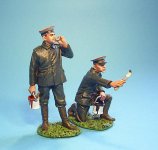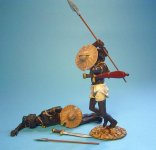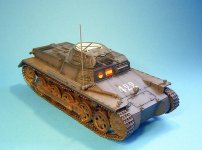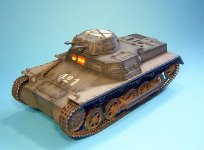Good morning from a cold and frosty Northern California.
A smaller set of announcements this month due to the Chinese New Year, the good news is they are still terrific. We have a new collection, or really the logical extension of one, plus really useful collector guides, and more.
We hope to have these available to show at the West coaster show.
We will have these on the web site later this morning.
www.sierratoysoldier.com
Hope you enjoy these as much as I do.
Mike
Sierra Toy Soldier Company
JJ DESIGNS COLLECTORS’ CLUB 2008 ANNUAL.
The first back issue of the Collectors’ Club Annual, which covers the year 2008.
The 2008 Annual includes articles , “Rangers And Whaleboats” by Randall Bond, “Terror On The Monongahela” by James H. Hillestad, the 2008 Caption Contest, as well as the usual listings of monthly releases.
Please note there is no Product List with this issue.
There will also be a 2006-2007 “Bumper Annual!”, which will cover the first 2 years of JJD. This should be available late in 2012.
JJCLUB-2008 ANNUAL
Retail us$12
The 2010 Annual will now also be available to purchase.
JJCLUB-2010 ANNUAL
Retail us$12
** PLEASE NOTE JJCLUB-2009 ANNUAL is also available**
Please check the dealer stock list
THE SEVEN YEARS WAR
The Jacobite Rebellion, and the French Indian War (The Seven Years War in North America) are both part of the JJD, Seven Years War Series.
The series would not be complete without an European, or a Clive in India Collection.
This summer, in Germany I will officially reveal the first part of the Seven Years War in Europe collection. This will be a small collection based on the famous Carl Rochling painting of the Prussian Guard storming the churchyard at Leuthen.
For now only a few figures will be released.
Those interested in further reading
Osprey Campaign Series, Rossbach And Leuthen 1757, by Simon Millar and illustrated by Adam Hook.
The Battle of Leuthen, fought on 5 December 1757, Frederick the Great's Prussian army used maneuver and terrain to decisively defeat a much larger Austrian army under Charles of Lorraine, thus ensuring Prussian control of Silesia during the Seven Years' War.
Of all of his battles, none shows Frederick's military abilities more than the Battle of Leuthen . His leadership before and throughout the battle show his capabilities as a military commander. The Battle of Leuthen can truly be considered to be Frederick's masterpiece.
LEUT-01
THE SEVEN YEARS WAR
THE BATTLE OF LEUTHEN 1757
ARMY OF FREDERICK THE GREAT
PRUSSIAN GRENADIER ADVANCING#1
1 Figure (1pc)
Retail us$39
Carl Röchling (May 21, 1855 – May 6, 1920) was a German painter and illustrator known for his representation of historical military themes.
http://www.military-art.com/mall/images/800s/dhm0631.jpg
“Die Schlacht Von Leuthen”, 7th December 1757 by Carl Rochling
**PLEASE NOTE THIS SERIES WILL HAVE ITS OFFICIAL RELEASE IN GERMANY THIS SUMMER.**
THE JACOBITE REBELLION 1745
BJCAV-02
THE JACOBITE REBELLION 1745
BRITISH DRAGOONS
COBHAM’S 10th DRAGOONS
1 Figure (2pc)
Retail us$86
KNIGHTS OF THE SKIES
During WW1 Germany changed the “style” of the Iron Cross no less than 5 times.
In the short lifespan of planes and pilots it becomes a very usefull tool in identifying when photographs were taken.
At mobilization on 1 August 1914, Idflieg instructed the Feld Flieger Abteilungen, (Field Flying Detachments) to paint a black straight sided cross at the mid-point of the wing panels on both sides of the wings and on both sides of the rudder.
The Idflieg (Inspektion der Fliegertruppen - "Inspectorate of Flying Troops") was the bureau of the German Empire that oversaw German military aviation prior to and during World War I.
A telegram was sent to the aircraft manufacturers, instructing them to paint curve style Iron Crosses in the appropriate places on the wings and rudder. The serial number was to be moved to the fin or fuselage sides. The Idflieg directive, was without specific dimensions or form, each factory came up with their own curve style cross form. At this time all military vehicles, including aircraft were painted Field Grey. Because of the lack of contrast, between the Field Grey wings and rudder, and the black cross, the Idflieg ordered, sometime in September or October 1914, that a square white field be painted surrounding the black crosses on both sides of the wing panels and rudder.
On 25 July 1916, the Idflieg sent out a directive that dimensionally specified the standard cross form. The standard Iron Cross was to be painted on a square white cross field, painted on the top surface of the upper wing, near the wing tips; the bottom surface of the lower wing, near the wing tips; on both sides of the fuselage and rudder.
The Idflieg sent out a directive dated 29 October 1916, instructing Field units and the manufacterers to paint out the white cross fields and leave only 5cm white border surrounding the black Iron Cross. There was some concern that the white cross fields were being mistaken for allied cockades.
On 20 March 1918, the Idfleig sent out telegram Order 41390 which directed that all aircraft crosses would be the straight cross with a 15 cm white border surrounding black cross. This was the introduction of the Balken (beam) style cross. The proportions of the cross was not given. But, this was corrected by a second set of instructions after several calls and telegrams. The directive stated the rudder was to be painted white with the black beam cross painted on the white rudder. These changes in the crosses were to be carried out no later than 15 April 1918.
The cross form made by the Jasta personnel in the field varied all over the place. Most just drew straight lines fom the tips of the arms resulting in very fat crosses with a ratio of 1:2.5 and some 1:3.
The next change which occured on 13 May 1918, was to the Latin Cross with the height to width ratio of 5:4. This cross was a complete new cross with the vertical bar of the cross to be full chord, from leading edge to trailing edge. The length of the horizontal bar was to be 4:5 of the vertical bar. The width of the bar was to be 1:8, and the white border will form right angles between the cross arms, the white border would not enclosed the ends of the cross arms. The width of white border to the bar width will be 1:4, i.e. the vertical height were 1000 mm, the horizontal bar would be 800 mm the bar width would be 125 mm and the white border would 31.25 mm wide.
The final change in the German national markings was on 25 June 1918 when a directive was sent by telegram to all units and manufacturers to change the height to wide ratio from 5:4 to 1:1, the lengths of the vertical and horizontal bars were to be equal lengths. For example the upper wing cross on a Fokker D.VII would be changed from 1600 x 1280 to 1600 x1600 mm, the bar would be 200 mm wide and the white border 50 mm wide.
There were no further changes to the German national markings to the end of the war.
GGC-05
Knights Of The Skies,
German Ground crew, Painters.
(2pc)
Retail us$62
THE FIRST SUDAN WAR 1884-1885
MAD-05
THE FIRSTSUDAN WAR 1884-1885
MAHDISTS
2 Beja Warriors, Casualties#3
(4pcs)
Retail us$68
THE CONDOR LEGION THE WEHRMACHT’S TRAINING GROUND
The PzKpfw Ausf. A was under-armored, with steel plate of only 13 millimeters (0.51 in) at its thickest. The tank had several design flaws, including suspension problems which made the vehicle pitch at high velocities, and cause engine overheating.
Many of the problems in the Ausf. A were corrected with the introduction of the PzKpfw Ausf. B. The engine was replaced by the water-cooled, six-cylinder Maybach NL 38 TR, developing 98 horsepower (73 kW), and the gearbox was changed to a more reliable model. The larger engine required the extension of the vehicle's chassis by 40 cm (16 in), and this allowed the improvement of the tank's suspension, adding an additional bogie wheel and raising the tensioner.The tank's weight increased by 0.4 tons. Production of the Ausf. B began in August 1935 and finished in early 1937
Germany initially sent forty-one Panzer I A's to Spain.
This first shipment was followed by four more shipments of Panzer I Ausf. B's, to bring the total to 122 vehicles.
COND-02(421)
THE CONDOR LEGION
PzKpfw Ausf B
(2pcs)
Retail us$152
COND-02(422)
THE CONDOR LEGION
PzKpfw Ausf B
(2pcs)
Retail us$152
TRAVEL AND SHOWS FOR 2012
JOHN WILL BE AT THE LONDON TOY SOLDIER SHOW SATURDAY 31st MARCH 2012
As always, hope you enjoyed.
Mike
Sierra Toy Soldier Company
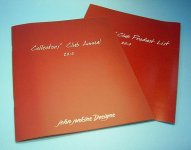
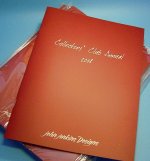
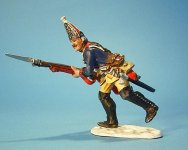
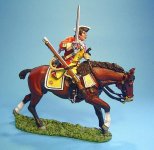
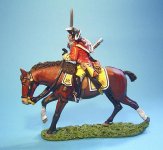
A smaller set of announcements this month due to the Chinese New Year, the good news is they are still terrific. We have a new collection, or really the logical extension of one, plus really useful collector guides, and more.
We hope to have these available to show at the West coaster show.
We will have these on the web site later this morning.
www.sierratoysoldier.com
Hope you enjoy these as much as I do.
Mike
Sierra Toy Soldier Company
JJ DESIGNS COLLECTORS’ CLUB 2008 ANNUAL.
The first back issue of the Collectors’ Club Annual, which covers the year 2008.
The 2008 Annual includes articles , “Rangers And Whaleboats” by Randall Bond, “Terror On The Monongahela” by James H. Hillestad, the 2008 Caption Contest, as well as the usual listings of monthly releases.
Please note there is no Product List with this issue.
There will also be a 2006-2007 “Bumper Annual!”, which will cover the first 2 years of JJD. This should be available late in 2012.
JJCLUB-2008 ANNUAL
Retail us$12
The 2010 Annual will now also be available to purchase.
JJCLUB-2010 ANNUAL
Retail us$12
** PLEASE NOTE JJCLUB-2009 ANNUAL is also available**
Please check the dealer stock list
THE SEVEN YEARS WAR
The Jacobite Rebellion, and the French Indian War (The Seven Years War in North America) are both part of the JJD, Seven Years War Series.
The series would not be complete without an European, or a Clive in India Collection.
This summer, in Germany I will officially reveal the first part of the Seven Years War in Europe collection. This will be a small collection based on the famous Carl Rochling painting of the Prussian Guard storming the churchyard at Leuthen.
For now only a few figures will be released.
Those interested in further reading
Osprey Campaign Series, Rossbach And Leuthen 1757, by Simon Millar and illustrated by Adam Hook.
The Battle of Leuthen, fought on 5 December 1757, Frederick the Great's Prussian army used maneuver and terrain to decisively defeat a much larger Austrian army under Charles of Lorraine, thus ensuring Prussian control of Silesia during the Seven Years' War.
Of all of his battles, none shows Frederick's military abilities more than the Battle of Leuthen . His leadership before and throughout the battle show his capabilities as a military commander. The Battle of Leuthen can truly be considered to be Frederick's masterpiece.
LEUT-01
THE SEVEN YEARS WAR
THE BATTLE OF LEUTHEN 1757
ARMY OF FREDERICK THE GREAT
PRUSSIAN GRENADIER ADVANCING#1
1 Figure (1pc)
Retail us$39
Carl Röchling (May 21, 1855 – May 6, 1920) was a German painter and illustrator known for his representation of historical military themes.
http://www.military-art.com/mall/images/800s/dhm0631.jpg
“Die Schlacht Von Leuthen”, 7th December 1757 by Carl Rochling
**PLEASE NOTE THIS SERIES WILL HAVE ITS OFFICIAL RELEASE IN GERMANY THIS SUMMER.**
THE JACOBITE REBELLION 1745
BJCAV-02
THE JACOBITE REBELLION 1745
BRITISH DRAGOONS
COBHAM’S 10th DRAGOONS
1 Figure (2pc)
Retail us$86
KNIGHTS OF THE SKIES
During WW1 Germany changed the “style” of the Iron Cross no less than 5 times.
In the short lifespan of planes and pilots it becomes a very usefull tool in identifying when photographs were taken.
At mobilization on 1 August 1914, Idflieg instructed the Feld Flieger Abteilungen, (Field Flying Detachments) to paint a black straight sided cross at the mid-point of the wing panels on both sides of the wings and on both sides of the rudder.
The Idflieg (Inspektion der Fliegertruppen - "Inspectorate of Flying Troops") was the bureau of the German Empire that oversaw German military aviation prior to and during World War I.
A telegram was sent to the aircraft manufacturers, instructing them to paint curve style Iron Crosses in the appropriate places on the wings and rudder. The serial number was to be moved to the fin or fuselage sides. The Idflieg directive, was without specific dimensions or form, each factory came up with their own curve style cross form. At this time all military vehicles, including aircraft were painted Field Grey. Because of the lack of contrast, between the Field Grey wings and rudder, and the black cross, the Idflieg ordered, sometime in September or October 1914, that a square white field be painted surrounding the black crosses on both sides of the wing panels and rudder.
On 25 July 1916, the Idflieg sent out a directive that dimensionally specified the standard cross form. The standard Iron Cross was to be painted on a square white cross field, painted on the top surface of the upper wing, near the wing tips; the bottom surface of the lower wing, near the wing tips; on both sides of the fuselage and rudder.
The Idflieg sent out a directive dated 29 October 1916, instructing Field units and the manufacterers to paint out the white cross fields and leave only 5cm white border surrounding the black Iron Cross. There was some concern that the white cross fields were being mistaken for allied cockades.
On 20 March 1918, the Idfleig sent out telegram Order 41390 which directed that all aircraft crosses would be the straight cross with a 15 cm white border surrounding black cross. This was the introduction of the Balken (beam) style cross. The proportions of the cross was not given. But, this was corrected by a second set of instructions after several calls and telegrams. The directive stated the rudder was to be painted white with the black beam cross painted on the white rudder. These changes in the crosses were to be carried out no later than 15 April 1918.
The cross form made by the Jasta personnel in the field varied all over the place. Most just drew straight lines fom the tips of the arms resulting in very fat crosses with a ratio of 1:2.5 and some 1:3.
The next change which occured on 13 May 1918, was to the Latin Cross with the height to width ratio of 5:4. This cross was a complete new cross with the vertical bar of the cross to be full chord, from leading edge to trailing edge. The length of the horizontal bar was to be 4:5 of the vertical bar. The width of the bar was to be 1:8, and the white border will form right angles between the cross arms, the white border would not enclosed the ends of the cross arms. The width of white border to the bar width will be 1:4, i.e. the vertical height were 1000 mm, the horizontal bar would be 800 mm the bar width would be 125 mm and the white border would 31.25 mm wide.
The final change in the German national markings was on 25 June 1918 when a directive was sent by telegram to all units and manufacturers to change the height to wide ratio from 5:4 to 1:1, the lengths of the vertical and horizontal bars were to be equal lengths. For example the upper wing cross on a Fokker D.VII would be changed from 1600 x 1280 to 1600 x1600 mm, the bar would be 200 mm wide and the white border 50 mm wide.
There were no further changes to the German national markings to the end of the war.
GGC-05
Knights Of The Skies,
German Ground crew, Painters.
(2pc)
Retail us$62
THE FIRST SUDAN WAR 1884-1885
MAD-05
THE FIRSTSUDAN WAR 1884-1885
MAHDISTS
2 Beja Warriors, Casualties#3
(4pcs)
Retail us$68
THE CONDOR LEGION THE WEHRMACHT’S TRAINING GROUND
The PzKpfw Ausf. A was under-armored, with steel plate of only 13 millimeters (0.51 in) at its thickest. The tank had several design flaws, including suspension problems which made the vehicle pitch at high velocities, and cause engine overheating.
Many of the problems in the Ausf. A were corrected with the introduction of the PzKpfw Ausf. B. The engine was replaced by the water-cooled, six-cylinder Maybach NL 38 TR, developing 98 horsepower (73 kW), and the gearbox was changed to a more reliable model. The larger engine required the extension of the vehicle's chassis by 40 cm (16 in), and this allowed the improvement of the tank's suspension, adding an additional bogie wheel and raising the tensioner.The tank's weight increased by 0.4 tons. Production of the Ausf. B began in August 1935 and finished in early 1937
Germany initially sent forty-one Panzer I A's to Spain.
This first shipment was followed by four more shipments of Panzer I Ausf. B's, to bring the total to 122 vehicles.
COND-02(421)
THE CONDOR LEGION
PzKpfw Ausf B
(2pcs)
Retail us$152
COND-02(422)
THE CONDOR LEGION
PzKpfw Ausf B
(2pcs)
Retail us$152
TRAVEL AND SHOWS FOR 2012
JOHN WILL BE AT THE LONDON TOY SOLDIER SHOW SATURDAY 31st MARCH 2012
As always, hope you enjoyed.
Mike
Sierra Toy Soldier Company







